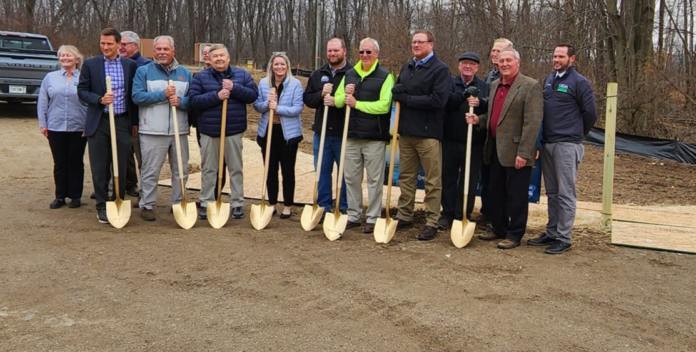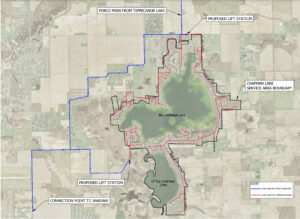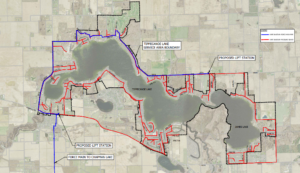
OSWEGO — After decades of effort, the Tippecanoe Chapman Sewer District broke ground on what is believed to be one of the biggest “non-sewered” residential lake communities in the state.
Thursday’s milestone was celebrated near the Oswego Community Center where one of three pump stations is already under construction.
The project will provide sewer service to about 1,800 customers around the two lakes in Kosciusko County at a cost of about $51 million — making it one of the biggest infrastructure projects in county history.
About 95% of the customers have already signed easement agreements needed to participate.
Many of those assembled at Thursday’s celebration has had a hand in achieving the goal that dates back decades. One of those is Lyn Crighton, executive director of The Watershed Foundation, whose group was founded in 1997 after the first of three failed attempts to create a district failed.
Crighton called it a watershed moment for the Watershed.
The latest effort began five years ago.
The group has worked for 25 years to protect water quality
“We’ve implemented over 250 projects toward that goal, but this by far is the biggest of all and I can not wait to see what benefits our community will reach today and in the future from this project,” Crighton said.
Steven Henschen, a senior staff engineer with Jones Petrie Rafinski, remembered his work in the mid-1990s while he studied the need for sewers in the area.
He said the district turned to the city of Warsaw to treat the waste in an effort to limit monthly changes that customers will begin paying after construction.
Warsaw’s recently expanded its wastewater treatment plant with the intention of serving another community.
It’s a pretty incredible rate for this day and age with the recent cost increases. The district has been working hard to keep the rates in the 80 or 90 dollar range so they were ecstatic to be able to do that.”
A representative of the USDA, Ric Frataccia, attended the ceremony and explained the impact the changes will bring.
“At the end of the day, it is as much a quality of life project as it is a septic elimination project. It’s truly going to foster growth for decades.
Funding came through Indiana State Revolving Fund loan program (SRF) and the United States Department of Agriculture (USDA) – Rural Development.






